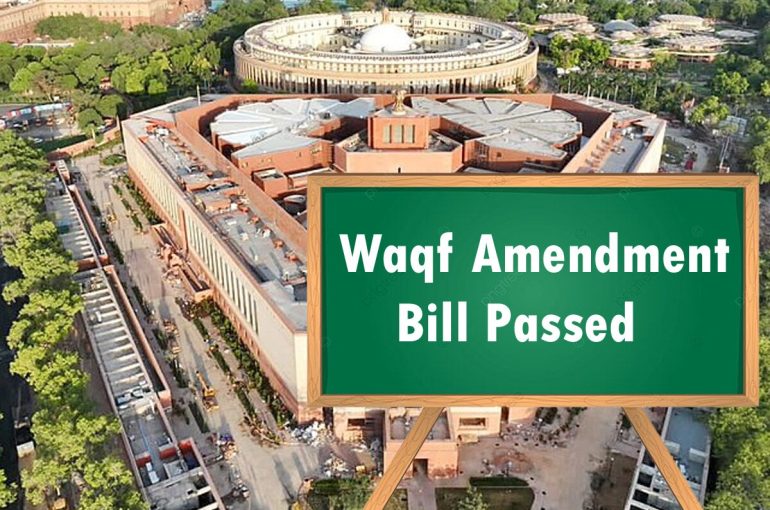Understanding the Waqf (Amendment) Act, 2025: A New Era for Waqf Administration in India

A Landmark Legislative Overhaul Proises Modernization Amidst Debate
The landscape of Waqf administration in India is set for a significant transformation with the enactment of the Waqf (Amendment) Act, 2025, also now amended as the Unified Waqf Management, Empowerment, Efficiency and Development Act (UMEED Act). This legislation, which received Presidential assent on April 5, 2025, and came into effect on April 8, 2025, introduces sweeping changes to the Waqf Act, 1995, aiming to modernize the management of vast Waqf properties, enhance transparency, and reduce disputes. However, the Act has also ignited considerable debate and legal challenges, with critics raising concerns about religious autonomy and potential overreach.
Understanding Waqf: A Legacy of Charitable Endowments
Waqf is an Arabic term meaning “detention” or “to restrain,” which represents the permanent dedication of property by a Muslim for pious, religious, or charitable purposes. Once declared Waqf, the property is considered to belong to God, its ownership inalienable and its benefits directed towards community welfare, supporting institutions like schools, orphanages, hospitals, and mosques. India has one of the largest networks of Waqf properties in the world, estimated at approximately 870,000 properties covering over 940,000 acres, making it the third-largest institutional landowner in the country second only to Indian Railways and Indian Armed Forces.
The journey of Waqf legislation in India has been evolutionary, from the Mussalman Wakf Validating Act of 1913 to the comprehensive Waqf Act of 1995 and its subsequent amendment in 2013. These laws progressively formalized and centralized Waqf administration, establishing State Waqf Boards (SWBs) and the Central Waqf Council (CWC). The Sachar Committee Report in 2006 further highlighted the immense potential of Waqf properties, which were often underutilized and mismanaged, providing a strong impetus for reform.
The UMEED Act: Key Provisions and Stated Rationale
The Waqf (Amendment) Act, 2025, also known as the UMEED Act was introduced with the stated objectives of addressing long-standing issues such as property disputes, encroachments, survey deficiencies, lack of transparency, and litigation overload. The Government has positioned it as a measure to establish a “secular, transparent, and accountable system.”
Key changes introduced by the Act include:
- Redefining Waqf Creation: Only a person practicing Islam for at least five years and lawfully owning the property can now create a Waqf. This reverses the 2013 amendment that allowed “any person” to do so. Furthermore, the concept of “waqf by user” (where property becomes Waqf through long public usage without a formal deed) is abolished for new Waqfs, with existing registered “waqf by user” properties protected unless disputed or Government-owned. The Act also aims to protect the inheritance rights of legal heirs, including women, in Waqf-alal-aulad (family Waqfs).
- Restructuring Waqf Administration: The composition of the CWC and SWBs will now include non-Muslim members. SWBs will become entirely nominated bodies, with provisions for representation from diverse Muslim sects and at least two Muslim women. The power to conduct surveys of Waqf properties is transferred to the District Collector, and Waqf Boards no longer have the unilateral power to declare a property as Waqf. The Central Government gains enhanced rule-making and audit powers, including the potential for CAG audits of Waqf Boards.
- Enhanced Accountability for Mutawallis (Caretakers): Mutawallis face stricter eligibility criteria and are mandated to digitally register all Waqf properties on the Waqf Asset Management System of India (WAMSI) portal within a specified timeframe. Non-compliance can lead to the Waqf losing its right to enforce its rights in court. Penalties for mismanagement and non-compliance have also been increased.
- Transparency through Digitization: The WAMSI portal is central to the reforms, aiming to provide public access to details of Waqf properties, including geotagging and mapping. A centralized grievance mechanism is also envisioned.
- Revised Dispute Resolution: Appeals against Waqf Tribunal orders can now be filed in the respective High Court. The District Collector will play a significant role in disputes where property is claimed as Waqf but is also asserted to be Government land.
- Applicability of the Limitation Act, 1963- The Limitation Act of 1963 will now apply to Waqf properties, potentially affecting the recovery of lands that have long been encroached upon.
- Specific Exclusions: Muslim trusts created under other laws are excluded from the Act’s purview. The creation of Waqf on Tribal lands (Schedule V and VI areas) is prohibited, and Waqf claims on Archaeological Survey of India (ASI) protected monuments are rendered invalid.
Impact and Implications: A Spectrum of Change
The UMEED Act is poised to have far-reaching consequences:
- Management and Protection: Digitization via WAMSI is expected to improve management. However, provisions like the abolition of “waqf by user” for new Waqfs, the Collector’s role in Government land disputes, the application of the Limitation Act, and the de-notification of ASI sites as Waqf could lead to a reclassification or loss of Waqf status for many properties.
- Encroachments: While the Act introduces stricter measures and expedited processes for dealing with encroachments, the application of the Limitation Act presents a significant challenge for reclaiming properties encroached upon for extended periods.
- Tenants and Lessees: The redefined status of “encroacher,” which includes leases that have expired or been terminated, offers Waqf Boards clearer pathways for eviction but requires proactive management of leases.
Controversies and Criticisms
The Act has faced a barrage of criticism:
- Government Overreach and Undermined Autonomy: Critics argue the Act represents excessive Government interference in the religious affairs of a minority community, particularly through nominated boards and increased bureaucratic power.
- “Waqf by User” Abolition: This is seen as a threat to numerous historical properties lacking formal deeds but recognized as Waqf for generations.
- Inclusion of Non-Muslims in Waqf Bodies: This is viewed by some as a dilution of community control, with critics pointing out the lack of similar inter-faith representation requirements for other religious trusts.
- Increased Bureaucratic Power: The expanded role of the District Collector has raised concerns about potential bias, especially in disputes involving Government land.
- Application of Limitation Act: This is seen as eroding the “once a Waqf, always a Waqf” principle, potentially legitimizing long-standing encroachments.
- Broader Socio-Political Narratives: Many view the Act within a larger political context, alleging an agenda to erode minority rights and institutions.
Government’s Defence and Judicial Scrutiny
The Union Government defends the Act as necessary for transparency, accountability, and efficiency, asserting it does not encroach on religious practices but focuses on the secular aspects of Waqf management. It argues that the inclusion of non-Muslims promotes wider accountability and that the application of the Limitation Act harmonizes Waqf law with general property laws.
The constitutional validity of the UMEED Act has been challenged in the Supreme Court in an ongoing petition titled as In Re: Waqf (Amendment) Act, 2025 [W.P.(C) No. 269/2025]. Petitioners argue violations of religious freedom, discrimination, and arbitrary bestowal of power. The Supreme Court has sought responses from the Government and, in interim observations, has questioned the treatment of “waqf by user” properties. The Government has assured the court that, pending further orders, no Waqfs would be de-notified and no new appointments to Waqf bodies would be made. The outcome of this ongoing petition is much awaited by both proponents and critics of the amended legislation.
The Path Forward
The Waqf (Amendment) Act, 2025, signifies a watershed moment for Waqf administration in India. It introduces mechanisms aimed at addressing long-standing inefficiencies and promoting transparency. However, it also brings fundamental changes that have sparked significant legal and societal debate regarding religious autonomy, property rights, and the balance between state regulation and community control. The ongoing judicial scrutiny will be crucial in shaping the final interpretation and implementation of this transformative legislation, determining the future course for India’s vast and historically significant Waqf endowments.
Sushila Ram Varma,
Advocate & Chief Consultant,
The Indian Lawyer & Allied Services
Assisted by Saharsh Singh,
Intern,
4th Year, National Law Institute University, Bhopal





































Leave a Reply